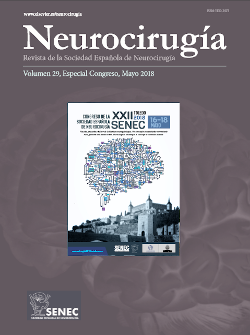C0063 - ANGIOGRAPHICALLY NEGATIVE SPONTANEOUS SUBARACHNOID HAEMORRHAGE: EVALUATION OF CLINICAL AND EPIDEMIOLOGICAL FEATURES AND COMPARISON WITH ANEURYSMATIC CAUSE
1Hospital de Braga, Braga, Portugal. 2Escola de Medicina-Universidade do Minho, Braga, Portugal. 3Serviço de Neurocirurgia, Hospital de Braga, Braga, Portugal.
Objectives: A spontaneous subarachnoid haemorrhage (sSAH) is most commonly caused by aneurysm rupture, however, in 10-20% of patients, the cause is not found even with the best diagnostic tools such as Angiography. This entity is named Angiographically Negative sSAH and is divided in two categories according to the blood distribution pattern - Pre-truncal sSAH (pt-sSAH) and sHSA with diffuse haemorrhagic pattern (df-sSAH). The purpose of this work was to analyse the clinical and epidemiological characteristics in patients with negative sSAH according to blood distribution pattern and compare them with those with aneurysmatic cause (an-sSAH).
Methods: A retrospective study of all patients with sSAH who were admitted in a single center from January 2010 to December 2015 was performed. Patients were grouped into three groups: pt-sSAH, df-sSAH and an-sSAH.
Results: A sample of 162 patients was analysed, 24 with pt-sSAH, 22 with df-sSAH and 116 with an-sSAH. It was verified that the pretruncal sSAH affected more frequently younger man and these patients had more commonly arterial hypertension. Most of the patients with Angiographically Negative sSAH presented with a benign clinical status and suffered fewer complications such as hydrocephalus, vasospasm, and ischemia induced neurological deficit compared with patients with an-sSAH. At the time of discharge, the neurological outcome was very similar between patients with pt-sSAH and df-sSAH being clearly better than in an-sSAH cases. It was not possible to identify prognostic indicators in the Angiographically Negative sSAH group.
Conclusions: Patients with pt-sSAH and df-sSAH presented a benign clinical course especially when compared with patients with an-sSAH. In this work, the clinical course and prognostic was similar in both patterns of negative sSAH despite literature shows a more benign course for pt-sSAH.







